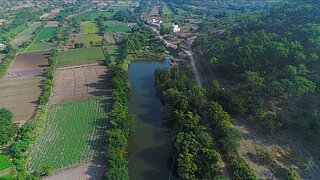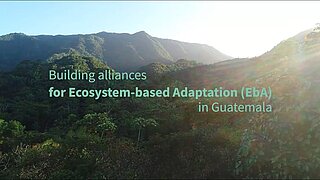The role of communities in making ecosystem-based adaptation
![[Translate to English:]](/fileadmin/_processed_/2/e/csm_17_II_157_Pasabien_watershed__Guatemala__5___c__El_Fassi_8bb2c2e534.jpg)
The link between healthy ecosystems and resilience to climate change is well established. What is perhaps less well known is the role of social capital.
The link between healthy ecosystems and resilience to climate change is well established. Healthy ecosystems absorb greenhouse gas emissions and “reduce vulnerability to climate-related extreme events and other economic, social and environmental shocks and disasters.” What is perhaps less well known is the role of social capital – simply defined as the existence of shared values and connections that enables individuals and groups to work together to adapt to climate change.
The interplay among these and other determinants of ecosystem health are at the heart of the Ecosystem-based Adaptation (EbA) approach. EbA can be defined as the use of biodiversity and ecosystem services to help people to adapt to the adverse effects of climate change. In order to understand how these interrelationships play out at the local level, TMG Research, WOTR, WWF and ADIMI, in the context of the IKI-funded Climate-SDG Integration Project, analysed longstanding community initiatives in India and Guatemala. The study was carried out between 2019 and 2020.
Five key insights for bottom-up EbA processes
Empowerment of local communities is a prerequisite for EbA action.
The study found that EbA delivers for people where inclusive and participatory modes of governance are well established. Village-level committees, such as those convened by WOTR in Maharashtra, India, work as consultative bodies, ensuring broad ownership of decisions made. They can also oversee the agreed natural resource management processes such as forest management or water allocation – so that water is shared fairly and used sustainably. Community-run seed banks in San Francisco, Guatemala are another example of a community-based knowledge resource.
Community based organisations can play an important role in catalysing EbA processes.
The research further revealed the crucial role that civil society organisations (CSOs) play in orchestrating and amplifying EbA actions. With their extensive knowledge of local contexts, community-embedded CSOs, such as farmer organisation ASOCUCH in Huehuetenango region in Guatemala, often enjoy a high degree of trust, and are therefore able to ensure that local adaptation needs are taken into account in higher-level climate planning and in government bodies. As ‘bridge-builders’, these organisations can facilitate the empowerment of local people.
EbA initiatives need to make economic sense.
Investing in EbA, especially for smallholder farmers, requires upfront investments. In order to take on the considerable risks involved in transitioning to more sustainable farming practices, farmers need to understand that such efforts will pay dividends in the long run. But for many farmers, the capital outlay required may simply be out of their reach. It is therefore essential that community EbA initiatives also explore non-farm financial incentives to boost farmers’ income.
EbA entails managing trade-offs among different interests.
EbA projects almost always involve making choices among competing options.The need to conserve forests may conflict with practices of firewood gathering, while in contexts of scarcity the needs of all villagers for drinking water may pose challenges for farmers irrigating their fields. To safeguard the needs and interests of all stakeholders, it is therefore important to ensure that EbA decisions are mediated by legitimate participatory local governance processes.
As public goods, EbA funds must be accessible to local communities.
If well designed and executed, EbA initiatives can help to redress unequal resource allocation and power imbalances that aggravate the vulnerability of women, indigenous communities and other groups. This can be done, for example, through providing access to climate-resilient seeds, or channelling a portion of payments for ecosystem services generated through community efforts. Speziell ausgebildete Feuerwehrkräfte bauen ein Beobachtungssystem für Waldgebiete auf.
EbA projects build on a pre-existing landscape of programmes, projects and governance structures
This history matters when introducing or upscaling EbA. Successful EbA projects will be designed with an understanding of both the strengths and shortcomings of existing initiatives, harnessing and adapting the former, while integrating them into EbA’s systemic approach.
For more information how communities and local support groups can be supported in making ecosystem-based adaptation thrive,seethe policy paper ‘Ecosystems for resilience’, available in English and Spanish.
The link has been copied to the clipboard
Contact
IKI Office
Zukunft – Umwelt – Gesellschaft (ZUG) gGmbH
Stresemannstraße 69-71
10963 Berlin












